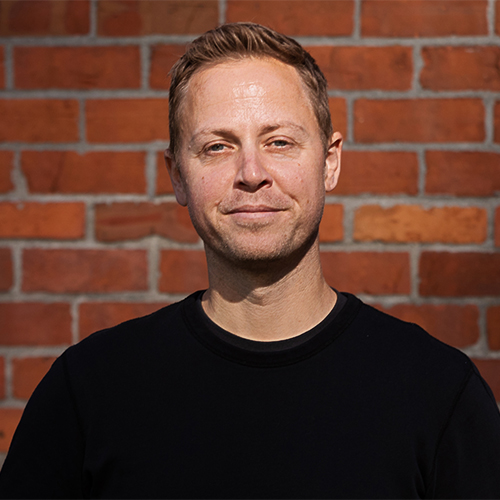Episode 196 – November 14, 2019
Listen On: Apple Podcasts | Spotify | Google Podcasts | YouTube
Today’s show takes us underground to talk about an often overlooked danger lurking just beneath your feet: oil tanks. GeoScan Subsurface Surveys’ Joseph Salazar joins Adam & Matt this week to chart why oil tanks are problematic, tank timelines, clues that a house was on oil, why your uncle’s metal detector is not enough, and some horror stories too. Trust us! You’ll tank us later.
Listen to Episode
Guest Information

Joseph Salazar
Joeseph is GeoScan Subsurface Survey’s Operations Directors and a GeoRadar Group Owner. He has been with the company since 2014. He’s a passionate and enthusiastic leader who has helped GeoScan and Xradar make huge strides in it’s evolution from a small Vancouver-based Utility Locator, to one of the nationwide leaders of the industry.
Episode Summary
Tell us about yourself.
I moved to Canada about nine years ago to do a ski season in Whistler. That was only supposed to last one year but I’m still here. I then moved down to Vancouver and worked in construction. I joined Geoscan Subsurface Survey six years ago.
I was actually born in Vancouver to a Mexican father and British mother, and then moved back to the UK when I was quite young. But I always had a Canadian passport so decided to come back here. I have family in both Mexico and the UK.
Can you tell us about Geoscan Subsurface Survey?
The company was founded ten years ago and when I joined it was a very small operation. Our vision was to be specialists in ground penetrating radar. The two main pillars were utility locating and concrete slab scanning. The company grew from six people when I joined, to now 40 people spread over two offices in Burnaby and Victoria. We’re operating in the Greater Vancouver and Greater Victoria regions.
How does what you do apply to residential real estate and land use?
Ground penetrating radar (GPR) is an ideal technology to use to identify oil tanks. From the 1920s, furnace oil began to replace fireplaces. Gas came in to replace oil in the 1970s. So that’s 50 years where furnaces ran on oil and an oil tank was needed. Those tanks needed to be refilled with oil to heat the home.
Of course, the oil tanks were deemed unsightly above ground so they were buried under the ground to hide them away. As gas came into play, the tanks were decommissioned. But there were no rules or regulations for removing the tanks. They were just left in the ground. That was fine in the 70’s but now we know it’s an environmental concern. Over time, these tanks rust and corrode, allowing oil to spill out and contaminate the soil surrounding it. This becomes a big deal as oil leaks all over a housing lot, neighbours’ lots, etc.
It’s the owner’s responsibility and you need to be especially careful as you buy/sell and transfer this problem.
What is the end result of oil contamination?
In terms of the environment, it’s a very big deal. When we find a tank it’s not just a simple task of removing it. You need an independent environmental consult to test your soil and see if it’s contaminated.
How do you mitigate the risk as a home buyer?
Call Geoscan! You can also call the municipality and the fire department to see if there are any records of a removal. There’s no harm in checking first. If there aren’t any records, and there were no laws for this back in the 70s, you’ll want to move onto surveying. Tank removal companies will do a survey first, usually for free, but it’s often with just a metal detector. With Geoscan, we’re using three different types of tests and technology to scan and survey the area.
How does Geoscan move past the limitations on a lot?
In theory, all of the “easy” oil tanks have been found. If a tank is buried in the middle of an open field, a metal detector should find it. But if you have a tank under a carport made of concrete, within the concrete is steel rebar, there’s metal fencing nearby, there’s a deck – all of that will detract from the signal and confuse the metal detector.
We still use metal detectors as they are handy. But GPR is the best technology. It uses radar impulses that go into the ground and tell you when there’s a change of density or material type. It basically works like an ultrasound of the ground. It’s not affected by things like concrete slabs, decks, etc.
You can read the results on site and can see the difference between soil and metal. You can see the shape of the tank and the depth to which it is buried.
Is GPR more certain?
It is the most conclusive method out there but nothing is guaranteed. There’s also often access issues – if you can’t scan the area, you can’t get the most accurate results. If someone is guaranteeing their results, they are lying. But GPR is the most conclusive way to know if there is a tank on the property.
Keep your finger on the pulse of Vancouver’s real estate market with our Live Wire email newsletter.
If your house is built outside of the 1920-1970 window, should you still be scanned?
Yes. Just because the building that is there now isn’t from that window, it doesn’t mean an older building didn’t have a tank. When they built the new building, they didn’t necessarily remove the tank. They may not have dug the building foundation in the spot where the tank was buried. We’ve also found instances of two tanks on the same lot.
What should homeowners do if they didn’t do a scan or didn’t do a proper one?
I suggest getting a survey done of your property to know the facts. Geoscan provides an unbiased report for a flat fee and works for the client. It’s up to the homeowners to do what they will with that information.
What are we talking in terms of costs?
Our service is a flat fee of $400+tax in Vancouver for the scan. If there is a tank and it’s conveniently located, accessible and easy to remove, it will be about $3000-5000 to remove. We don’t remove tanks – we survey and report our findings. Variable pricing comes into play if you need to remediate the soil. It’s charged on a per litre basis – removing soil that has been contaminated and replacing it with clean soil. That can get expensive.
There have been tanks in Nanaimo and Saanich where cases go to court and previous owners are splitting the cost for soil remediation.
Any tips for homeowners of what to look for?
Yes, there are three things to look for. The first is the fill pipe – a pipe sticking out of the ground. That’s an easy and obvious one, most of which have been dealt with by now. Second, a vent pipe. There is where the air escapes as the oil is filled. It’s usually a pipe that comes out of the ground and runs up part of the building and then stops. And the last thing to look for is two small copper pipes in the basement or furnace room – these would supply oil to the furnace. These pipes were usually removed or cut off when the oil lines were pulled. If they were removed, you may see the concrete patched up.
Do you see this problem ever going away? Are you scanning your way out of business?
As time goes on, more and more tanks will be found and there are only a certain amount out there. But just because the odds reduce it doesn’t mean there isn’t a tank on your property. So people should still survey. Surveying won’t go down but the ratio of finding tanks will.
What’s the ratio right now?
About 6-8 to 1. When I first started, it was more like 4 to 1. So we’re definitely finding tanks for sure. And they’re all over the Lower Mainland.
Notes on price points
Geoscan is priced higher ($400) than a metal detector scan (apx $100) but you’re paying for certainty. Many metal detector scans come with a liability clause stating they can’t be held responsible for any findings or missed findings. And it can be a costly mistake if you miss a tank. As people build additions to their homes, if they just lay concrete down, they could be covering a tank that is now a lot harder to spot. Over time, erosion and damage to the tank just gets worse.
5 Wire
Favourite Neighbourhood: Mt Pleasant (2nd Commercial Drive)
Favourite Bar or Restaurant: The Charlatan Commercial Drive
Piece of advice you would give your 18-year-old self: Be careful which Halloween costume you choose
One book you would recommend: The Alchemist by Paulo Coelho or Shantaram by Gregory David Roberts
Something you have purchased for under $500 that has changed your life: Blundstone boots (last forever, very comfortable)
Keep your finger on the pulse of Vancouver’s real estate market with our Live Wire email newsletter.
Episode Host

Adam Scalena
Adam is a full-service realtor, specializing in Vancouver’s best areas. His systematic approach to real estate and dedication to his clients has consistently placed him within the top 10% of realtors operating within Greater Vancouver.

Matt Scalena
Matt is real estate obsessed and considers himself a lifelong student of the Vancouver real estate market. As a co-manager of the Scalena Real Estate team, Matt prides himself on expertly advising buyers and sellers on all aspects of the fast-paced, dynamic Vancouver real estate market. He is present at every stage of the process, from that first phone call or email right through to when keys are exchanged between sellers and buyers.







